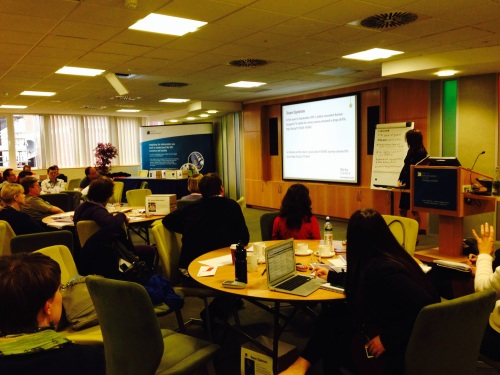Writing for social media @ONS
The social media team tries to edit content supplied from all corners of the organisation in to one of three copy formats. On Monday we were able to share this with statisticians and the like in an all day training session looking at best practice, user personas, copy formats and writing exercises.
Setting the scene
The objective was obviously to improve everyone’s writing skills but longer-term, the outcome has to be evidencing better engagement off-site, more traffic to the site and more time on the site compared to a user coming to it by other means.
(By the way, I find that outcome stuff really exciting and going back to my post about The magnificent #MeasureFest, I look forward to drawing some workable insight now we tag all our social media urls.)
I started the day by setting the scene a little, showing that more and more people are talking about us in social media and that our content is seeing better engagement levels.
Life in the newsroom
Then Mark Frankel, Assistant Editor of BBC Social News, gave us insight into life in the newsroom and their approach to social media editorial. The bulk of his presentation was spoken, although he did show us a video on how they do the do, and he pointed to their practices and guidelines.
https://www.youtube.com/watch?v=4KL2VaBVDsk
Best practice
Next up, Catherine Toole from Sticky Content walked us through digital copywriting best practice.
ONS users and copy formats
Our own Head of Insight, Alison Saunders, gave the first outing of our new user personas which no doubt will be blogged about more here. I then ran through our three copy formats for social media:
- Headline. Subject, number and link. No messing about. Example
- Nugget. Did you know? (without asking it). Example
- Draws you in. Makes users *want* to click as the content’s so profound, emotional or sticky. Example
The rest of the day was spent practising rewriting social media content that was once published, but now following this process (I appreciate this isn’t particularly groundbreaking, but it’s amazing how often (the royal) we miss the basics):
- Write for a user persona
- Pick the most suitable format
- Write the message in 100 characters
- Frontload it. The first two words are most important
Now what?
Feedback was really positive and a day later all participants received a parcel in internal post (made on a shoestring) with the most important dozen slides from the day and an invite for a coffee next week to discuss ‘them and social media @ONS’.
As much as better writing (and as a result better user engagement / referrals) is a measure of the day’s success, I think response to the coffee invites are as well. It’s a bit of a call to arms I suppose. I’d like to recruit more ‘HootSuiters’ and do lots more campaigning whilst we continue to see engagement and referrals go up.


2 comments on “Writing for social media @ONS”
Comments are closed.